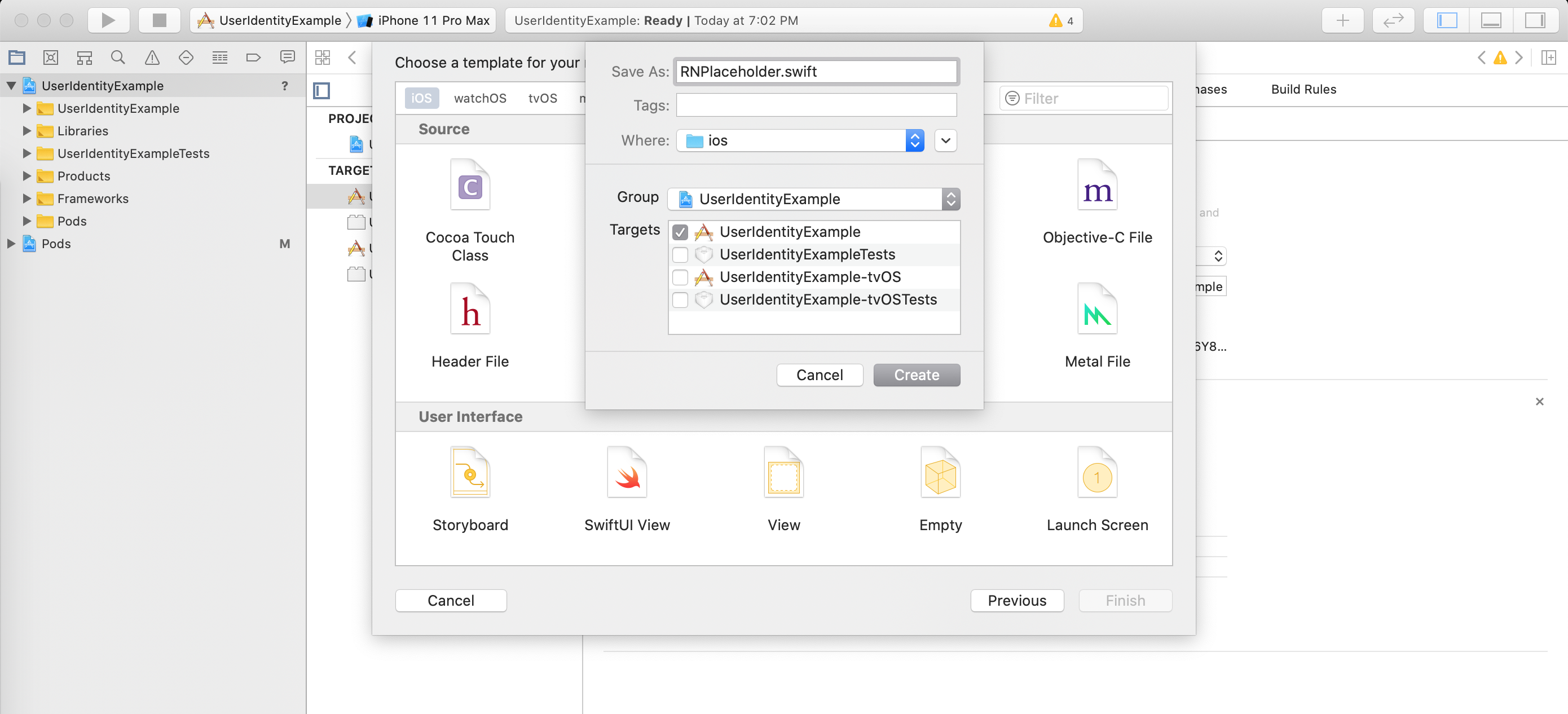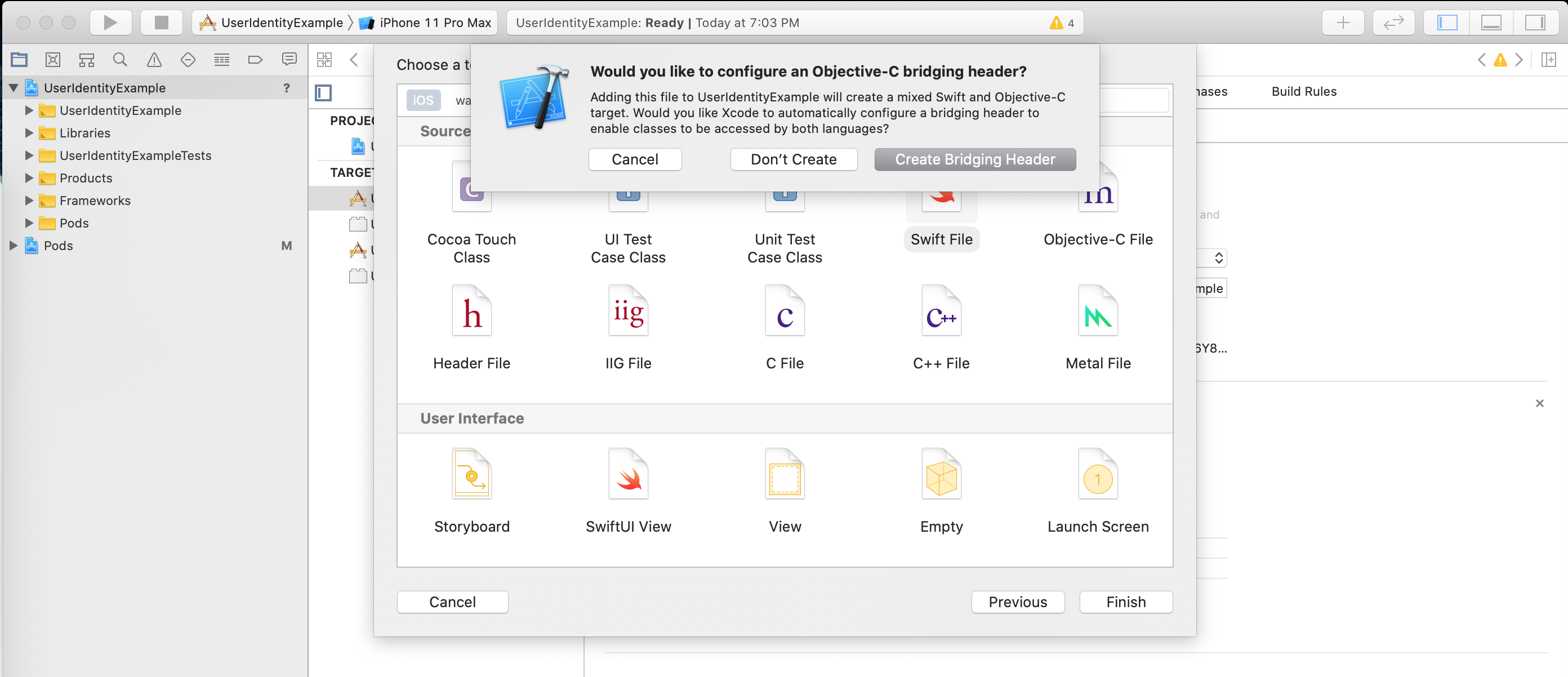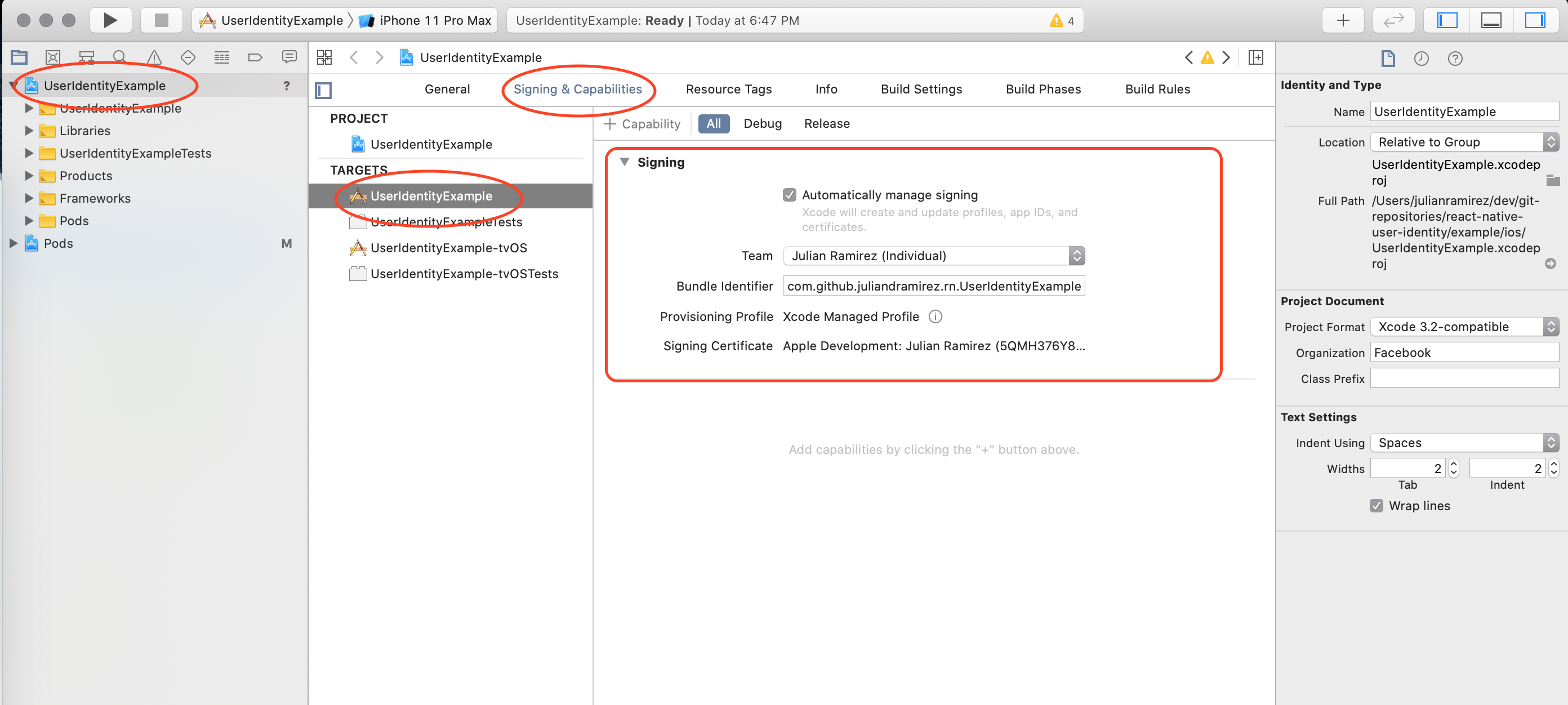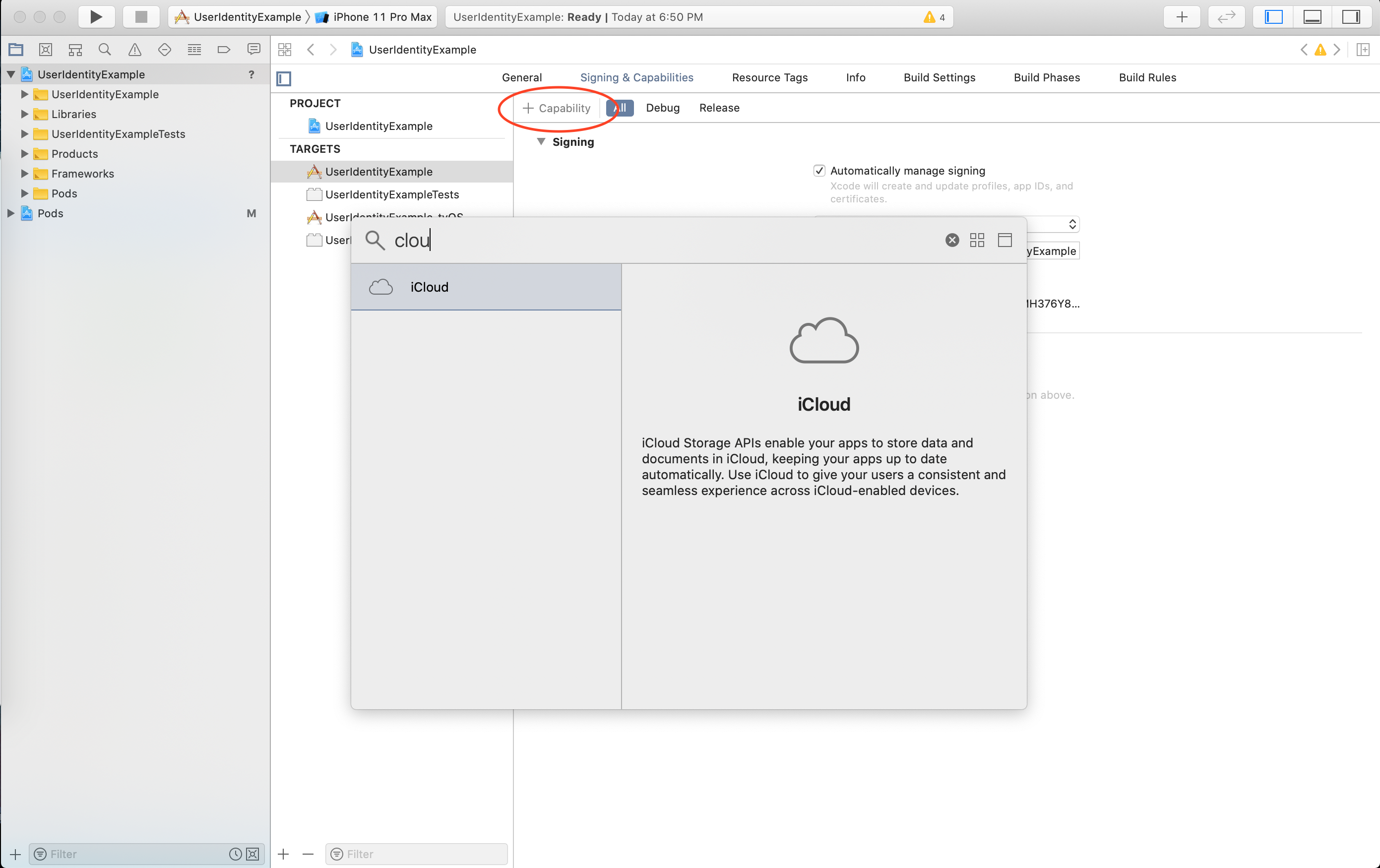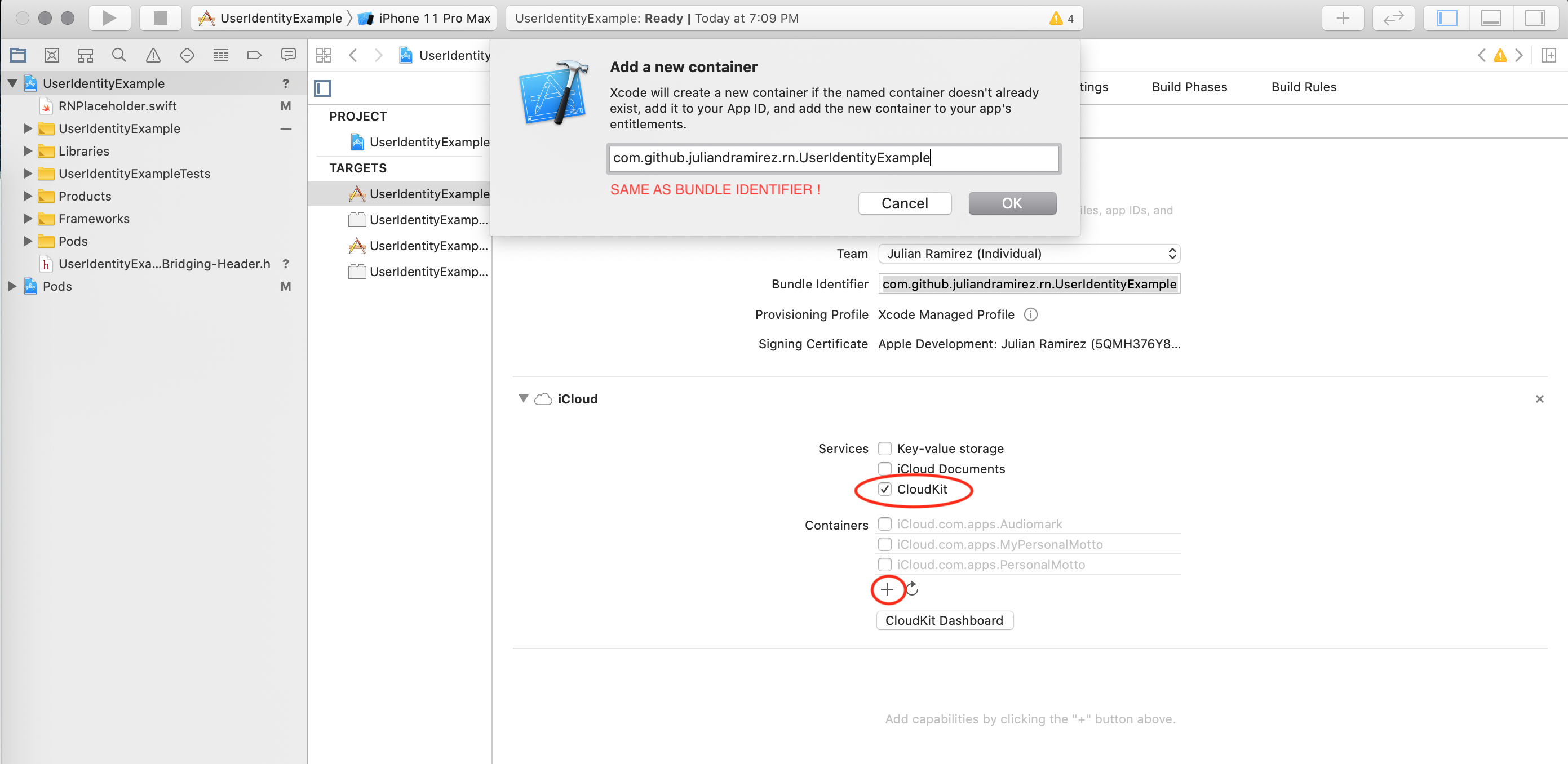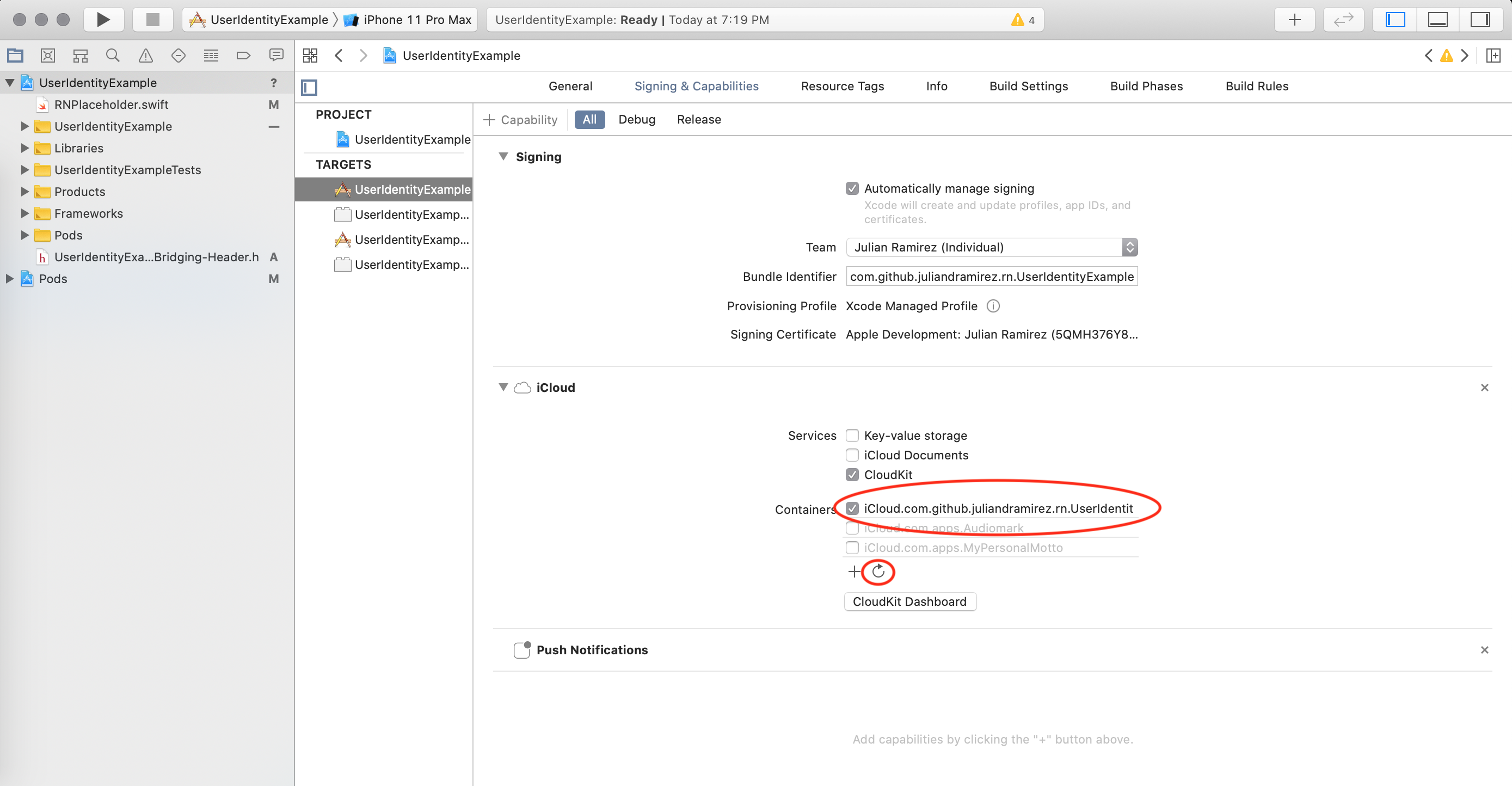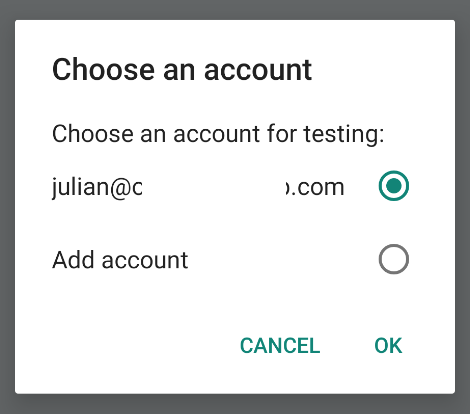Get the user id configured for the device (iCloud recordID for iOS, email of a device account for android)
When implementing a mobile application you want to provide your users as much functionality as you can without having them sign up. After all, Every Step Costs You 20% of Users.
Sign up may very well be the step where most of your potential users are lost.
Now imagine you could get a unique identifier that worked across all of the devices of the user. You could even have in-app purchases that are shared across devices without having to sign-up.
This library aims to provide all of the above in the simplest way possible:
- For ios it uses the record name of CloudKit so it uniquely identifies an ios user. It's difficult to imagine an apple user that does not have an iCloud account configured in each of their devices.
- For android it presents to the user a list of all the accounts configured in the device to choose from.
The most common use case is to present the list of google accounts configured since it's one of the first steps of configuring an android device nowadays.
See FAQ section at the bottom.
1. Install the library
yarn add react-native-user-identity
2. Run pod install
cd ios
pod install
3. Configure swift support for your iOS project
This configures your iOS project to use the module correctly since the library contains swift code (see the official react native documentation for more information)
Note: If your iOS project is alredy using swift files and you have a bridging header you may skip this step.
a. Create a swift file in the root of your project:
b. Select "Create Bridging Header" when Xcode asks for it:
4. Build the project
You should be able to build the project now.
Note: The package functionality will not work until you follow the steps of the next section
- Open up
android/app/src/main/java/[...]/MainActivity.java - Add the following lines to the class:
package com.github.juliandramirez.rn.useridentity.example;
import com.facebook.react.ReactActivity;
+ import android.content.Intent;
+ import com.github.juliandramirez.rn.useridentity.RNUserIdentityModule;
public class MainActivity extends ReactActivity {
@Override
protected String getMainComponentName() {
return "UserIdentityExample";
}
+ @Override
+ public void onActivityResult(final int requestCode, final int resultCode, final Intent data) {
+ super.onActivityResult(requestCode, resultCode, data);
+
+ if(requestCode == RNUserIdentityModule.INTENT_REQUEST_CODE) {
+ RNUserIdentityModule module =
+ this.getReactInstanceManager().getCurrentReactContext().getNativeModule(RNUserIdentityModule.class);
+ module.onActivityResult(resultCode, data);
+ }
+ }
}Note: If you have other UI fragments that you want to trigger the account selection dialog from, add the same lines to their activities
(Screenshots taken with Xcode 11.x)
- Make sure your app has a unique bundle identifier and does not show any errors in the Signing section (requires an apple development account):
- Add the iCloud capability for the project:
- Enable the cloudkit option, add a container and name it exactly as the bundle identifier of the application:
- Verify the configuration:
Verify all of the following:
- The format of the container name is iCloud.$(PRODUCT_BUNDLE_IDENTIFIER)
- Press the "Cloudkit Dashboard" button, sign in with your developer account. You should see your newly created container in the list of containers. Verify that there is no error when selecting it. If there is an error just keep trying until it becomes available.
- Go back to XCode and verify that the container name is not highlighted in red after you press the refresh option
- There is only one public function available called getUserId
- The function is marked as async
- On ios the resolved value is null when there is no icloud account configured
- On android the resolved value is null when the user dismisses the account selection dialog or when there is not an account configured in the device
import RNUserIdentity from 'react-native-user-identity'
fetchUserIdentity = async () => {
const result = await RNUserIdentity.getUserId()
if (result === null) {
if (Platform.OS === 'ios') {
alert('Please set up an iCloud account in settings')
} else if (Platform.OS === 'android') {
alert('Please select an existing account or create a new one')
}
}
}There are two optional parameters you can send:
-
androidAccountSelectionMessage: The text to display in the account chooser modal in android. By default there is no message configured.
-
androidAccountType: The type of account you want to list in the chooser. By default there is no filter set and all of the accounts configured in the device are presented.
Android documentation states the following:
Android devices can store multiple accounts from many different providers. When you query AccountManager for account names, you can choose to filter by account type. The account type is a string that uniquely identifies the entity that issued the account. For instance, Google accounts have type "com.google," while Twitter uses "com.twitter.android.auth.login."
The following code:
RNUserIdentity.getUserId({
androidAccountSelectionMessage: 'Choose an account for testing:',
androidAccountType: 'com.google'
})Presents this modal (the modal styles are OS dependant):
Use yarn to install the dependencies. Npm installs local dependencies using symbolic links and the react native packager does not support this.
You could use the same principle behind Firebase anonymous authentication but most likely you will run into the same limitations: Identities are associated to app installations (or devices in the best case scenario).
The CloudKit framework prevents applications from accesing the user email for privacy purposes.
iOS configuration is a hassle 😔. Make sure you followed all of the steps in the configuration section and pay attention to the important note at the end it.






